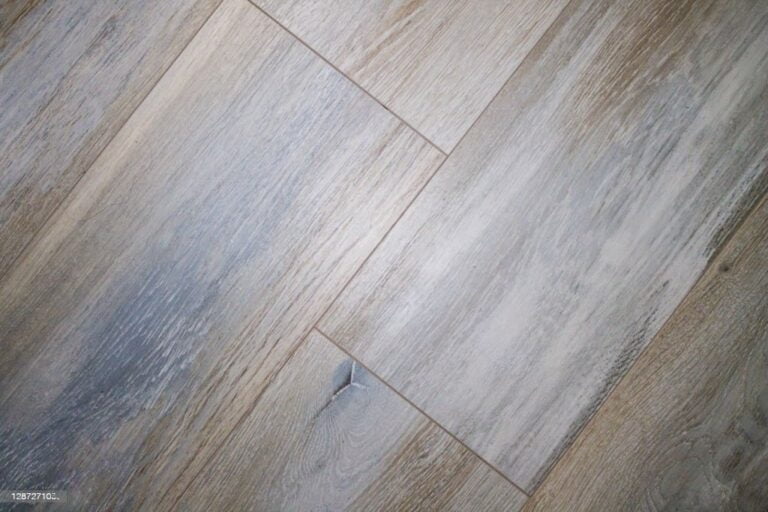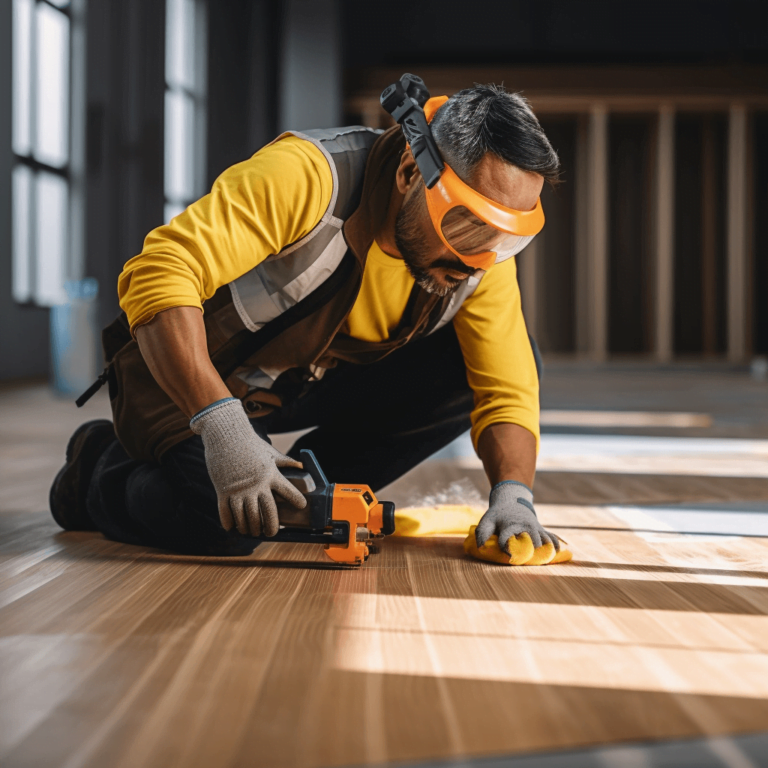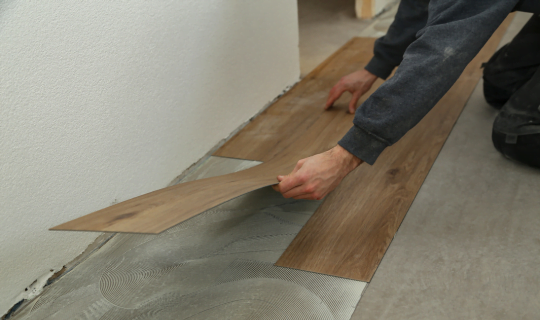How To Protect Vinyl Flooring From Heavy Furniture
At some point in our lives, we all have had to move heavy furniture around in our homes. This can…
At some point in our lives, we all have had to move heavy furniture around in our homes. This can be a daunting task, especially if you have vinyl flooring.
Vinyl flooring is a popular choice for many homeowners due to its durability, affordability, and easy maintenance. However, heavy furniture can cause damage to the flooring, such as scratches, dents, and even tears.
In this article, we will discuss how to protect your vinyl flooring from heavy furniture. We will explore the risks associated with placing heavy furniture on vinyl flooring, the different types of furniture pads that can help prevent damage, and how to rearrange your furniture for better weight distribution.
Additionally, we will provide tips on how to choose the right type of furniture for your vinyl flooring and how to maintain it for longevity. By following these guidelines, you can ensure that your vinyl flooring stays in excellent condition for years to come.
Understanding the Risks of Heavy Furniture on Vinyl Flooring
Before positioning large pieces of decor, it’s important to comprehend the potential damage that could arise from the weight placed on your vinyl floors.
Vinyl floors can be damaged by heavy furniture due to the pressure exerted on the floor. This can lead to scratches, dents, and even cracks in the flooring. It is essential to take proper measures to prevent this damage and ensure that your flooring remains in pristine condition.
Flooring protection is crucial when it comes to heavy furniture. One of the simplest ways to protect your vinyl flooring is by using furniture pads or felt pads. These pads help distribute the weight of the furniture evenly, reducing the pressure on any one area of the flooring. This will prevent scratches and dents from forming on the flooring surface.
Weight distribution is another important factor to consider when it comes to protecting your vinyl flooring. Avoid placing heavy furniture in one spot for a prolonged period of time. This can lead to pressure marks on the flooring, which can be difficult to remove.
By regularly shifting the placement of your furniture, you can prevent any one area of the flooring from bearing too much weight. With proper care, your vinyl flooring can remain in excellent condition for years to come.
Using Furniture Pads to Prevent Damage
If you want to keep your new floors looking fresh and scratch-free, try using some furniture pads to prevent any unwanted damage. There are several types of furniture pads available in the market, including felt, rubber, cork, and plastic.
Felt pads are the most common type of furniture pads used to protect vinyl flooring. They are soft and provide a cushioned surface that prevents scratches and dents. Rubber pads are also a good option as they provide excellent grip and are ideal for heavy furniture.
Proper installation techniques are crucial to ensure that the furniture pads work effectively. Before installing the pads, clean the furniture legs and the floor surface thoroughly. Ensure that the furniture legs are dry before attaching the pads.
It is also essential to choose the right size and shape of the furniture pad to ensure proper coverage. For instance, round pads are suitable for chair legs, while square or rectangular pads are ideal for table legs.
Using furniture pads is an effective way to protect your vinyl floors from heavy furniture. However, it’s essential to check the pads regularly and replace them if they show signs of wear and tear.
By following the proper installation techniques and choosing the right type of furniture pad, you can keep your floors looking new for years to come.
Rearranging Furniture for Better Weight Distribution
Rearranging your furniture to achieve better weight distribution is a simple yet effective way to prolong the life of your floors. Weight distribution refers to the way furniture is spaced and arranged on your flooring, with the goal of ensuring that no one piece of furniture carries too much weight.
When heavy furniture is concentrated onto a small area of your vinyl flooring, it can cause dents and scratches that are difficult to repair. By rearranging your furniture, you can distribute the weight across a greater area, reducing the risk of damage.
Furniture placement is key when it comes to ensuring proper weight distribution. Start by identifying the heaviest pieces of furniture in your room. These might include a sofa, a bed, or a large entertainment center.
Once you’ve identified these items, consider moving them to areas where they can share the weight with other pieces of furniture. For example, if you have a heavy sofa, place it against a wall and then add a couple of chairs to balance out the weight distribution.
Another strategy for better weight distribution is to create furniture groupings. This means grouping together pieces of furniture that are of similar weight and size. For example, you might group together a sofa, two armchairs, and a coffee table.
By doing so, you create a balanced grouping that distributes weight evenly across your flooring. This strategy not only protects your vinyl floors from damage, but it also creates a more visually appealing space.
Choosing the Right Type of Furniture for Vinyl Flooring
It’s important to choose the right type of furniture for your vinyl floors so that you can enjoy your space without worrying about any long-term damage.
To ensure that your furniture is not damaging your vinyl floors, keep these tips in mind when selecting pieces for your space:
-
Look for furniture with wide legs or a larger surface area to distribute weight evenly. This will prevent the furniture from sinking into the vinyl and leaving dents or marks.
-
Avoid furniture with metal or hard plastic legs, as these can scratch or leave scuff marks on vinyl flooring. Instead, opt for furniture with soft rubber or felt pads on the bottom of the legs.
-
Consider using furniture coasters or floor protectors under heavier pieces of furniture. These can help to distribute weight and prevent indentations or damage to your vinyl floors.
By following these tips, you can ensure that your vinyl floors remain in good condition for years to come. Remember to always check the weight limits of your furniture and avoid placing anything too heavy on your vinyl floors.
With a little bit of care and attention, you can protect your floors and enjoy your space without any worries.
Maintaining Your Vinyl Flooring for Longevity
To keep your vinyl floors looking their best for years to come, there are a few simple tips you can follow for proper maintenance.
One important aspect to consider is cleaning techniques. It’s important to avoid using harsh chemicals or abrasive cleaning tools that can damage the vinyl surface. Instead, opt for a gentle cleaner specifically designed for vinyl flooring and a soft mop or cloth to clean the surface.
Regular sweeping or vacuuming can also help to prevent dirt and debris from scratching or dulling the surface.
Another way to maintain your vinyl flooring is to consider floor covering options for high-traffic areas or areas where heavy furniture will be placed. Using area rugs or furniture pads can help to distribute weight and prevent indentations or scratches on the vinyl surface.
When moving furniture, be sure to lift it rather than dragging it across the floor, as this can also cause damage.
Lastly, it’s important to keep your vinyl flooring dry and free from excess moisture. This can be achieved by wiping up spills and avoiding wet mopping, as well as controlling humidity levels in your home.
By following these simple maintenance tips, you can help to protect your vinyl flooring and prolong its longevity for years to come.
Conclusion
In conclusion, protecting your vinyl flooring from heavy furniture is crucial to maintaining its longevity and aesthetic appeal.
By understanding the risks involved with placing heavy furniture on vinyl flooring, using furniture pads, rearranging furniture, and choosing the right type of furniture, you can safeguard your vinyl flooring from damage.
Regular maintenance of your vinyl flooring can also go a long way in preserving its quality and appearance. This includes regular cleaning, avoiding harsh chemicals, and promptly addressing any spills or stains.
By implementing these preventative measures, you can ensure that your vinyl flooring remains in top condition for years to come.



